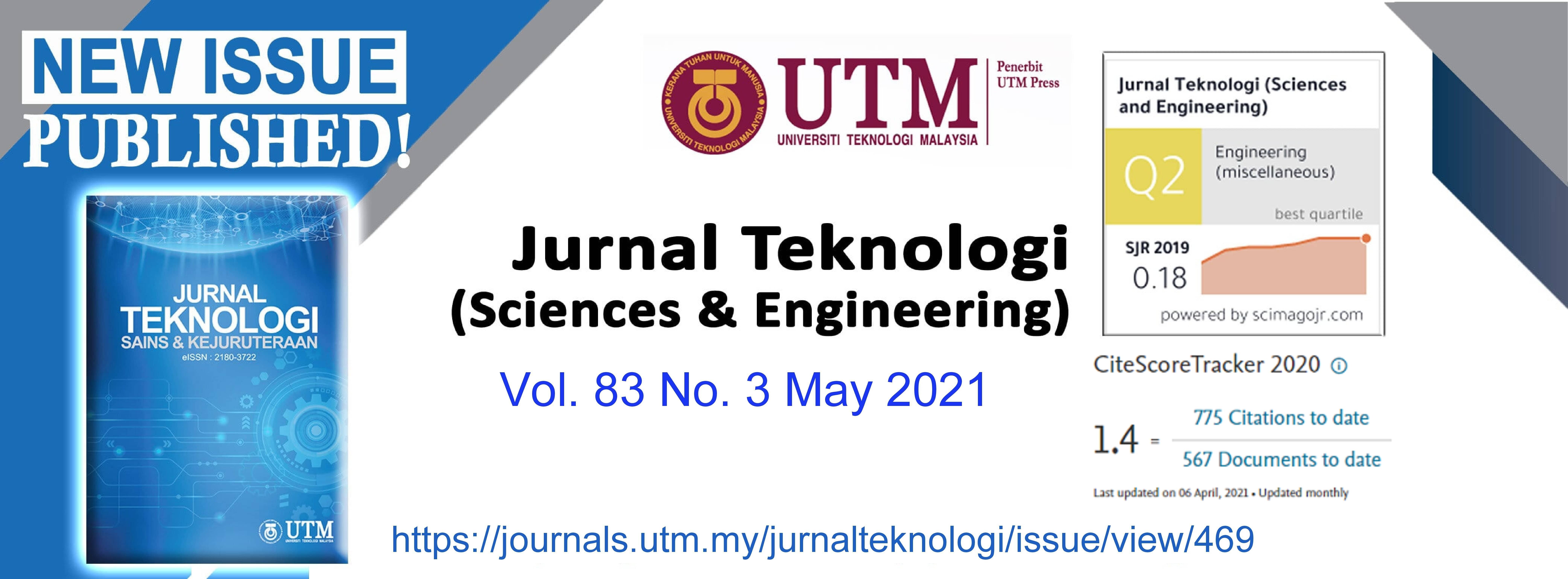THE IMPACT OF ECONOMIC ANALYSIS METHODS ON PROJECT DECISION-MAKING IN AIRPORT PAVEMENT MANAGEMENT
DOI:
https://doi.org/10.11113/jurnalteknologi.v83.14366Keywords:
Airport pavement management, life-cycle cost analysis, net future value, net present valueAbstract
Airports are a part of the world transportation network. Huge investments are made annually for airport pavement construction, maintenances and rehabilitations. The idea of integrating life-cycle cost analysis (LCCA) and life cycle assessment (LCA) is the latest approach to develop a method for assessing pavement sustainability. In this regard, research on economic evaluation analysis methods has resulted in the development and improvement of pavement management systems (PMS). This paper compares two main economic evaluations which mainly could use in LCCA namely net future value (NFV) and net present Value (NPV). To indicate the effect of economic evaluation a case study is examined. In this research LCCA comprises three main components which are direct costs, indirect costs, and salvage value. Airport Revenue Reduction Cost (ARRC) and Airline Delay Cost (ADC) considered as two specific indirect/user costs. The results show the impact of different economic analysis method on project decision-making where the use of crack sealing overlay (CSOL) is 35.8% and 28.3% more cost-effective than Portland cement concrete (PCC) and hot-mix asphalt (HMA), respectively.
References
Touran, A., Gransberg, D.D. Molenaar, K.R. Bakshi, P. Ghavamifar, K. A Guidebook for the selecting airport capital project delivery methods.
Hudson, W.R. Hass, R. Uddin, W. 1997. Infrastructure Management: Integrating Design, Construction, Maintenance, Rehabilitation, and Renovation; McGraw Hill: New York, NY, USA.
FAA, 2006. Airport Pavement Management Program, Advisory Circular AC 150/5380- 7A, FAA Washington, D.C.
Shahin, M.Y., Kohn, S.D., Lytton, R.L. & McFarland, M. 1985. Pavement M&R Budget Optimization Using the Incremental Benefit-Cost Technique. Proceedings of the North American Pavement Management Conference, Toronto, ON.
Santos, J., Ferreira, A. & Flintsch, G. 2014. A life cycle assessment model for pavement management: road pavement construction and management in Portugal. International Journal of Pavement Engineering 16: 315-336.
Humbert, S., Abeck, H., Bali, N. & Horvath, A. 2007. Leadership in Energy and Environmental Design (LEED): A critical evaluation by LCA and recommendations for improvement. International Journal of Life Cycle Assessment 12(1): 46-57.
Pittenger, D.M. 2011. Evaluate airport pavement maintenance/preservation treatment sustainability using life-cycle cost, raw material consumption and ‘greenroads’ standards. Journal of the Transportation Research Board 2206: 61–68.
Treloar, G.J. Love, P.E.D. Crawford, R.H. 2004. Hybrid Life-Cycle Inventory for Road Construction and Use. Journal of Construction, Engineering and Management, 130, 43–49.
Stripple, H.; Erlandsson, M. Methods and Possibilities for Application of Life Cycle Assessment in Strategic Environmental Assessment of Transport Infrastructures.
Santero, N.J. Masanet, E. Horvath, A. 2011. Life-cycle assessment of pavements. Part I: Critical review. Resources, Conservation and Recycling, 55, 801–809.
Yu, B. Lu, Q. Xu, J. 2013. An improved pavement maintenance optimization methodology: Integrating LCA and LCCA. Transport Research Part A, 55, 1–11.
Walls, J. & Smith, M.R. 1998. Life-Cycle Cost Analysis in Pavement Design. Interim Technical Bulletin. FHWA-SA-98-079. Federal Highway Administration, Washington, DC.
Anthonissen, J., D., Van Troyen, J., Braet, & W., Van den Bergh. 2015. Using carbon dioxide emissions as a criterion to award road construction projects: a pilot case in Flanders. Journal of Cleaner Production 102: 96-102.
Azari Jafari, H. Yahia, A. & Amor, M.B. 2016. Life cycle assessment of pavements: reviewing research challenges and opportunities. Journal of Cleaner Production 112: 2187-2197.
FHWA. 2015. Towards sustainable pavement systems: a reference document. FHWAHIF-15-002, Federal Highway Administration, Washington, DC.
Ozbay, K.; Jawad, D.; Parker, N.A.; Hussain, S. Life cycle cost analysis: state of the practice versus state of the art. J. Transp. Res. Board 2004, 1864, 62–70.
FHWA. 2016. Tools for Staying Ahead of the Curve LCCA and RealCost in Map-21/TPM.
Chen, C. Flintsch, G. 1990. Fuzzy logic pavement maintenance and rehabilitation triggering approach for probabilistic life cycle cost analysis. Journal Transport Research Board. 2012, 80–91.
Kendall, A. 2004. A dynamic Life Cycle Assessment Tool for Comparing Bridge Deck Designs. Master Thesis, University of Michigan.
Halil, C. R. Mathews, T. Kota, K. Gopalakrishnan, B. J. Coree. 2005. Rehabilitation of Concrete Pavements Utilizing Rubblization and Crack and Seat Methods. IHRB Project TR-473. Iowa Highway Research Board, Iowa Department of Transportation, Ames.
Hajek, J. Hall, J. Hein, D. 2011. Common Airport Pavement Maintenance Practices: A Synthesis of Airport Practice. Airport Cooperative Research Program, Transportation Research Board, the National Academies of Sciences, Engineering, and Medicine. Washington D.C. United States.
California Department of Transportation. 2015. Standard specifications, 263–822.
Weiland, C. Muench, S.T. 2010. Life-cycle assessment of reconstruction options for interstate highway pavement in Seattle. Washington, Transportation Research Record, pp. 18–27.
Zhang, H., Lepech, M.D., Keoleian, G.A., Qian, S., & Li, V.C. (2010). Dynamic life-cycle modelling of pavement overlay systems: capturing the impacts of users, construction, and roadway deterioration. Journal of Infrastructure Systems, 16(December), 299–309.
ARA. 2011. Life Cycle Cost Analysis for Airport Pavements. Airfield Asphalt Pavement Technology Program (AAPTP) Report 06-06. Applied Research Associates, Auburn, Alabama.
Downloads
Published
Issue
Section
License
Copyright of articles that appear in Jurnal Teknologi belongs exclusively to Penerbit Universiti Teknologi Malaysia (Penerbit UTM Press). This copyright covers the rights to reproduce the article, including reprints, electronic reproductions, or any other reproductions of similar nature.
















